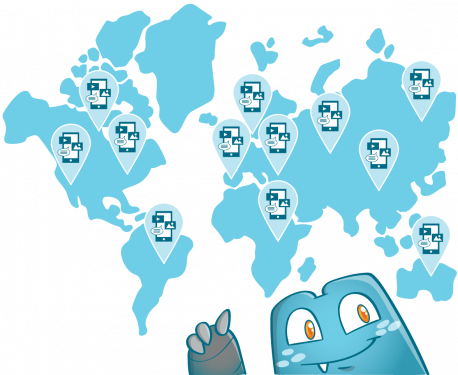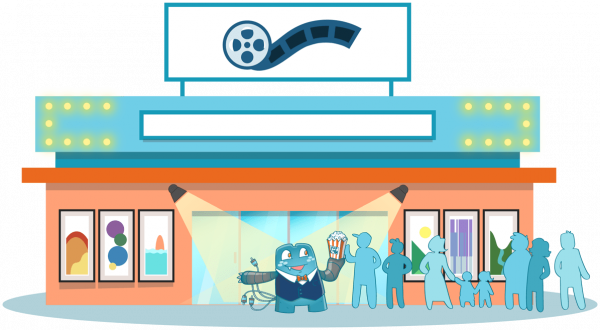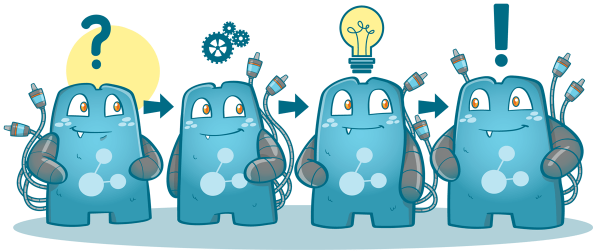Making Sense of Content Mapping and Internal Linking: What It Is and 5 Proven Steps on How to Do It

Do you ever feel like your website is a big, confusing mess? If so, you’re not alone. A lot of websites are challenging to navigate, and as a result, they lose traffic and revenue. One way to combat this is by using content mapping and internal linking.
In this blog post, we’ll discuss these two concepts and how to use them to improve your website’s usability.
What is Content Mapping?
Content mapping is the process of organizing your website’s content into a logical structure. This involves creating a map or outline of your website and filling in each section with relevant information.
When done correctly, content mapping can help you improve your website’s usability by making it easier for users to find what they’re looking for. It can also help you identify areas where your website could use improvement.
Content Mapping Steps
There are a few steps to create a content map:
- Develop Buyer Personas
The first step is to develop buyer personas. This involves creating profiles of your ideal customers and then outlining the content that would be most relevant to them.
You can create a content map using this information by starting with your website’s homepage and then drilling down into each section. You’ll want to include information about what each page should contain, as well as which keywords you should target.
What to Consider when Creating Buyer Personas?
- Demographics: This includes factors such as age, gender, location, and income.
- Behavior: This includes information about how your ideal customers behave, including their interests and needs.
- Motivations: This includes what motivates your ideal customers to buy, including pain points and goals.
Once you have a good understanding of who your buyers are, you can start creating content that’s relevant to them. The major relationship between personas and content mapping is evident since you’d want to first consider your buyers before creating pieces of content so they don’t get wasted.
- Keep in Mind the Customer Journey
Customer journey is the process that customers go through when interacting with your brand. It includes all the stages a customer goes through, from becoming aware of your brand to becoming a loyal customer.
When creating a content map, it’s important to keep the customer journey in mind. This will help you ensure that your content is relevant and useful at every stage.
Parts of the Customer Journey
- Awareness Stage
This stage is where customers become aware of your brand. They may not be familiar with you, but they’re interested in learning more.
In this stage, you’ll want to create content designed to introduce customers to your brand and its products or services. You can do this by creating blog posts, articles, and social media posts that discuss what you offer.
You can also use paid advertising to reach customers in this stage.
- Consideration Stage
In the consideration stage, customers are interested in learning more about your products or services. They may have already visited your website or interacted with you on social media.
In this stage, you’ll want to create content that helps customers learn more about your products and how they can benefit them. This may include blog posts, case studies, and e-books.
This stage is crucial since it’s when customers are deciding whether or not to buy from you.
- Purchase Stage
In the purchase stage, customers have decided to buy from you. They may have already made a purchase, or they’re in the process of doing so.
In this stage, you’ll want to create content that helps them finalize their purchase and ensure they’re happy with their decision. This may include product manuals, how-to guides, and post-purchase support.
- List Down All Required Pages
After developing buyer personas and picking which pages would be effective, you need to brainstorm and think about which personas to prioritize and what pages they would be interested in. This can be done by thinking about your website’s goals and the type of content you want to create.
List down all the content you’re eyeing and which categories they will be featured on.
- Do Keyword Research
Keyword research is the process of finding keywords that relate to your business and its products or services. You can then use these keywords to target your content.
- When doing keyword research, it’s important to consider the following:
- How many people are searching for this keyword?
- What kind of content is already ranking for this keyword?
- Is this a buyer-intent keyword?
- What are the long-tail variations of this keyword?
You can use tools like Google AdWords Keyword Planner and semrush.com to help your research.
All the pages you have listed in the previous step should have a corresponding keyword that the particular piece of content is targeting.
- Identify Content Gaps for the Future
Now that you have a list of your website’s current pages and the corresponding keywords, it’s time to identify any content gaps. This is where you’ll want to create content that’s not currently on your website.
You can use a tool like Google Sheets or Excel to do this.
Start by listing all of your website’s top-performing keywords. Then, beside each keyword, list the page on your website that’s ranking for that keyword.
Next, identify any keywords that have low competition but high search volume. These are the keywords you’ll want to target in the future.
Last, identify any topics or subjects that you’re not currently covering on your website. You can then create content around these topics in order to fill in the gaps.
What is Internal Linking?
Internal linking is the process of linking one page on your website to another page on your website. This can be done in three ways:
- Anchor Text: This is the most common way to link pages together. When you use anchor text, you create a hyperlink that contains a keyword or phrase. When users click on this link, they’ll be taken to the page you’ve linked to.
- Footer Links: This is a less common way to link pages together. When you use footer links, you create a hyperlink located at the bottom of your website. This link will take users to a page that contains a list of all the pages on your website.
- Image Links: This is a less common way to link pages together. When you use image links, you create a hyperlink that’s located in the images on your website. This link will take users to a page that contains a list of all the pages on your website.
Why Is Internal Linking Important?
Internal linking is important because it helps improve SEO and user experience.
When you internally link one page to another, you’re telling Google that these two pages are related. By doing this, you’re helping Google index your pages more efficiently and giving them clues as to what your website is about.
Internal linking also improves user experience by helping users navigate your website more easily. It also keeps users on your website for longer, which can help improve your website’s bounce rate.
How to Do Internal Linking
Now that you know what internal linking is and why it’s important, let’s learn how to do it.
There are a few different ways you can internally link pages together:
- Manual Insertion: This is the most common way to internally link pages. To do this, you’ll need to find the HTML code of the page that you want to link to. Once you have the HTML code, you’ll need to insert it into the page that you’re linking from.
- Plugin: There are a number of plugins available that will help you with internal linking. These plugins will allow you to create links from within your WordPress dashboard.
- Code: If you’re comfortable with coding, you can create internal links manually by using code. This is the most advanced way to do internal linking, but it gives you the most control over how your links are formatted.

Internal Linking and Content Mapping
Content mapping and internal linking are highly connected since content mapping is all about creating a map of your website’s content.
Internal links are what connect all of the pages you have included on your content map. When you create internal links, you tell Google that these pages are related and should be indexed together.
When you create a content map, you’ll want to include information about each page on your website, including the keyword that the page is targeting and any related keywords. You’ll also want to include information about the internal links between pages. This will help you identify any gaps in your website’s content and allow you to target additional keywords.
Now that you know what internal linking is and how to do it start creating a content map for your website. Once you have a complete map, start internally linking your pages together using the methods I’ve outlined above. As you do this, watch your SEO and user experience improve!
Maximizing the Power of Content Mapping and Internal Linking to Enhance SEO
SEO is an ongoing process. Still, all your SEO-related efforts will go to waste if you don’t have a good foundation. That’s where content mapping and internal linking come in.
When you have a complete content map and are using internal links to connect your pages, you’re giving Google all the information it needs to index your website efficiently. You’re also helping users navigate your website more easily, which can lead to longer visits and lower bounce rates.
In conclusion, you need to focus on these two aspects if you want a successful website!
If you’re looking for a bit of a nudge forward, why not look into Internal Link Juicer’s premium internal linking tool? It will definitely help you manage the internal links for your website!






